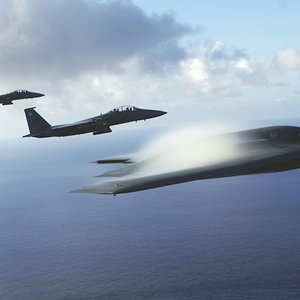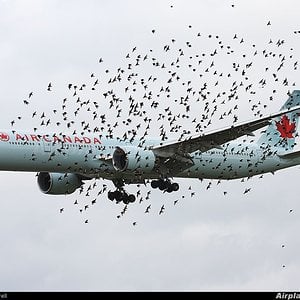Navigation
Install the app
How to install the app on iOS
Follow along with the video below to see how to install our site as a web app on your home screen.
Note: This feature may not be available in some browsers.
More options
You are using an out of date browser. It may not display this or other websites correctly.
You should upgrade or use an alternative browser.
You should upgrade or use an alternative browser.
DESCRIPTION:
Originally known as the S-37, Sukhoi redesignated its advanced test aircraft as the Su-47 in 2002 reflecting the decision to market the design as a production fighter rather than as an experimental prototype. Also commonly referred to as the Berkut (Golden Eagle), the Su-47 was originally built as Russia's principle testbed for composite materials andsophisticated fly-by-wire control systems.
The aircraft makes use of forward-swept wings allowing superb maneuverability and operation at angles of attack up to 45° or more. The advantages of forward sweep have long been known as such wings offer lower wave drag, reduced bending moments, and delayed stall when compared to more traditional wing shapes.
Unfortunately, forward sweep also induces significant wing twist that would shear most wings off the aircraft. To solve this problem, the Su-47 makes use of composite materials carefully tailored to resist twisting while still allowing the wing to bend for improved aerodynamic behavior. To reduce development costs, the S-37 borrowed the forward fuselage, vertical tails, and landing gear of the Su-27 family.
Nonetheless, the aircraft includes reduced radar signature features (including radar absorbent materials), an internal weapons bay, and space set aside for an advanced radar.
Though similar in overall concept to the American X-29 research aircraft of the 1980s, the Su-47 is about twice the size and far closer to an actual combat aircraft than the US design.
Su-47 has shown far superior manuvering in the air to any aircraft known to this date.
Like the X-29 though, the Su-47 was primarily a technology demonstrator, one intended to lay the foundation for the next Russian fighter. Such a fighter must not only be as advanced as the US F-22 and Eurofighter Typhoon, but must also compete for funding with the more conventional MiGs. However, Sukhoi is now attempting to market the Su-47 to the Russian military and foreign customers as a production fighter in its own right. Initial reaction was not good, but the aircraft's performance has been so impressive that the Russian government has made funds available for further testing of the design.
Still, the low budgets of the Russian military and the aircraft's high price tag make it unlikely that the Su-47 will be purchased any time in the near future
Originally known as the S-37, Sukhoi redesignated its advanced test aircraft as the Su-47 in 2002 reflecting the decision to market the design as a production fighter rather than as an experimental prototype. Also commonly referred to as the Berkut (Golden Eagle), the Su-47 was originally built as Russia's principle testbed for composite materials andsophisticated fly-by-wire control systems.
The aircraft makes use of forward-swept wings allowing superb maneuverability and operation at angles of attack up to 45° or more. The advantages of forward sweep have long been known as such wings offer lower wave drag, reduced bending moments, and delayed stall when compared to more traditional wing shapes.
Unfortunately, forward sweep also induces significant wing twist that would shear most wings off the aircraft. To solve this problem, the Su-47 makes use of composite materials carefully tailored to resist twisting while still allowing the wing to bend for improved aerodynamic behavior. To reduce development costs, the S-37 borrowed the forward fuselage, vertical tails, and landing gear of the Su-27 family.
Nonetheless, the aircraft includes reduced radar signature features (including radar absorbent materials), an internal weapons bay, and space set aside for an advanced radar.
Though similar in overall concept to the American X-29 research aircraft of the 1980s, the Su-47 is about twice the size and far closer to an actual combat aircraft than the US design.
Su-47 has shown far superior manuvering in the air to any aircraft known to this date.
Like the X-29 though, the Su-47 was primarily a technology demonstrator, one intended to lay the foundation for the next Russian fighter. Such a fighter must not only be as advanced as the US F-22 and Eurofighter Typhoon, but must also compete for funding with the more conventional MiGs. However, Sukhoi is now attempting to market the Su-47 to the Russian military and foreign customers as a production fighter in its own right. Initial reaction was not good, but the aircraft's performance has been so impressive that the Russian government has made funds available for further testing of the design.
Still, the low budgets of the Russian military and the aircraft's high price tag make it unlikely that the Su-47 will be purchased any time in the near future








